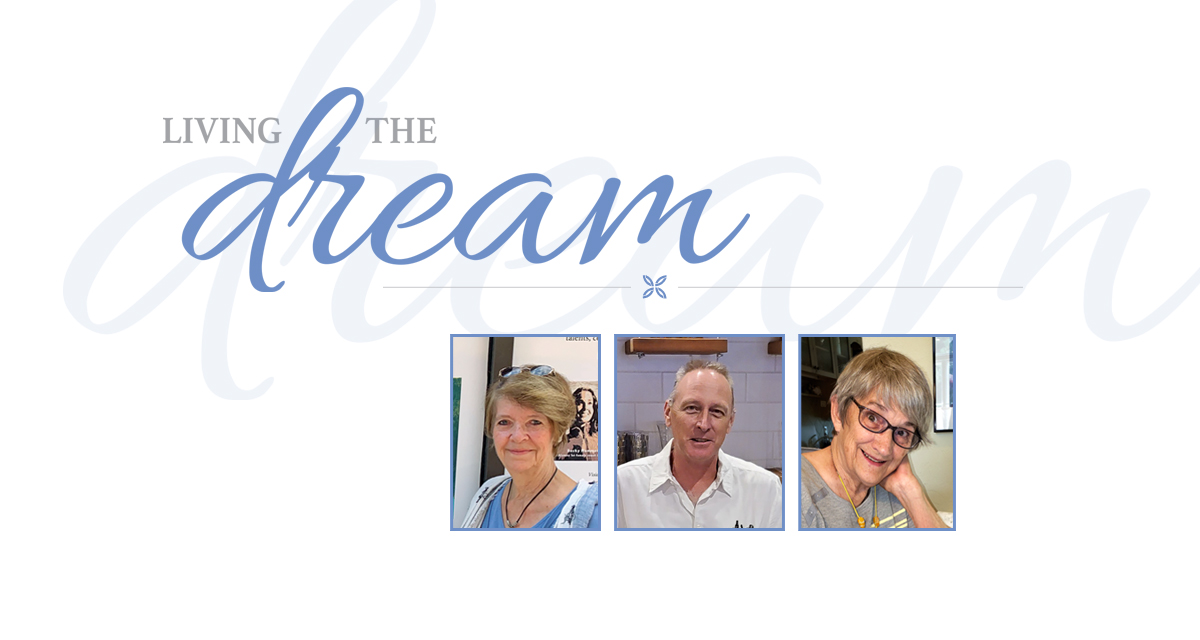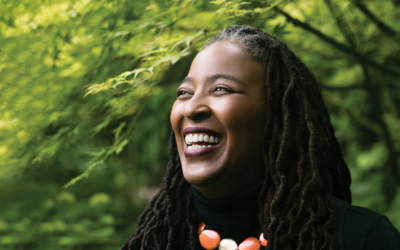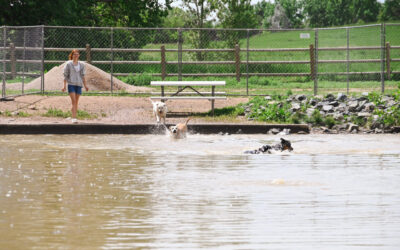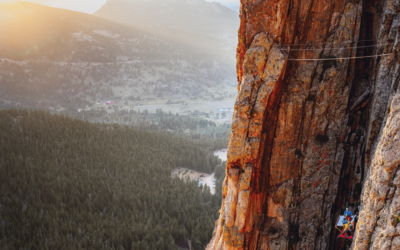By Jared Fiel
A lot of people dream of sunbathing or hitting the golf course, but a growing number of people have plans beyond boat drinks on the beach for their retirement.
According to a Princeton study, more than 30 percent of retirees aged 50-70 in the U.S. want to keep working, and 40 percent of those folks want to do something different than what they did for their career.
“I think it is essential for both mental and physical health for retirees to be engaged in some sort of activity,” says Teresa DeAnni, Healthy Aging Program Manager for Boulder County. “People may be done with work, but they still have their passion projects.”
She adds that retirees also have developed more confidence through their years. “They are more willing to take a risk and get a little bolder than they would have been when they first started out,” she says.
Many retirees remain active through volunteering. DeAnni suggests groups like Boomers Leading Change (boomersleadingchange.org) or county resources can help retirees find opportunities to volunteer. “The worst thing people can do is retire and then feel distressed that they have no purpose anymore,” she says. “It can be a big hit on the psyche.”
She says people who want to keep working have an “I’m not done” attitude that springs from a motivation of want instead of need. “It can be very exciting,” she says. NOCO Style wants to introduce you to three neighbors who are doing just that. They all retired from their regular careers to pursue a different dream.
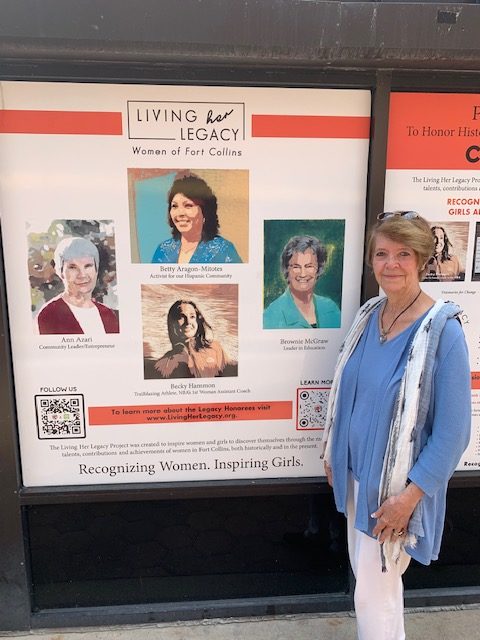
Patti Smith:
Nurse to nonprofit
A wrong turn at a convention in 2013 changed everything for Patti Smith, 71, of Fort Collins. That turn planted an idea in her that became a nonprofit and a legacy for women of the community.
But Smith’s story started on a different path when she graduated as a registered nurse in 1972. Drawn to the profession by her mother, who was also a nurse, Smith’s first job out of school was working nights in the emergency room at Poudre Valley Hospital, which was so small at the time it didn’t have doctors working overnight until the following year.
After 15 years at PVH and 20 as a health education consultant all over Colorado, when she put an estimated 292,000 miles on her car, Smith was always looking for ways to create opportunities in the health field, especially for women. And then there was the wrong turn.
Smith was at the Denver Convention Center and ended up on the south side of the building, where she saw 80 mosaic portraits–40 men and 40 women. There was no information about who they were, but she was intrigued enough to find out about the project later. Those 80 people were some of the most prominent figures in Denver’s history. “I thought, ‘Well, why not do this in Fort Collins,’” she says.
For 10 years, Smith had been a member of the Zonta Club of Fort Collins, an international organization that supports girls and women to reach their potential, get an education and live healthy and free from violence.
Because of that tie, she decided to focus on doing an art installation celebrating important women in the town’s history. The idea snowballed over the years, with selection sub-committees and money to be raised and artists to find.
All of it became too much to do with her regular job, and so she decided to retire three years ago to focus on this passion project. “This has been a seven-year labor of love,” she says. “This is the main project in my life and is way more of a business now.”
In fact, in 2020, while the rest of us were huddled away in our homes because of COVID-19, Smith worked on paperwork for five weeks to have Living Her Legacy become an official nonprofit. “People have no idea how much work that is,” she says. “But COVID-19 actually helped me. I just focused on that.”
The project is already coming to life. The first four of the wood-etching portraits by artist Rachael Davis were installed near Coopersmith’s in Old Town. Those first four are Ann Azari, Becky Hammon, Betty Aragon-Mitotes and Brownie McGraw. More will be added on a regular basis until all 48 are showcased there.
“There really hasn’t been much recognition of the contributions of women in our community,” Smith says. “I’ve always been a risk-taker, and this is something I think is worth taking a risk on.”
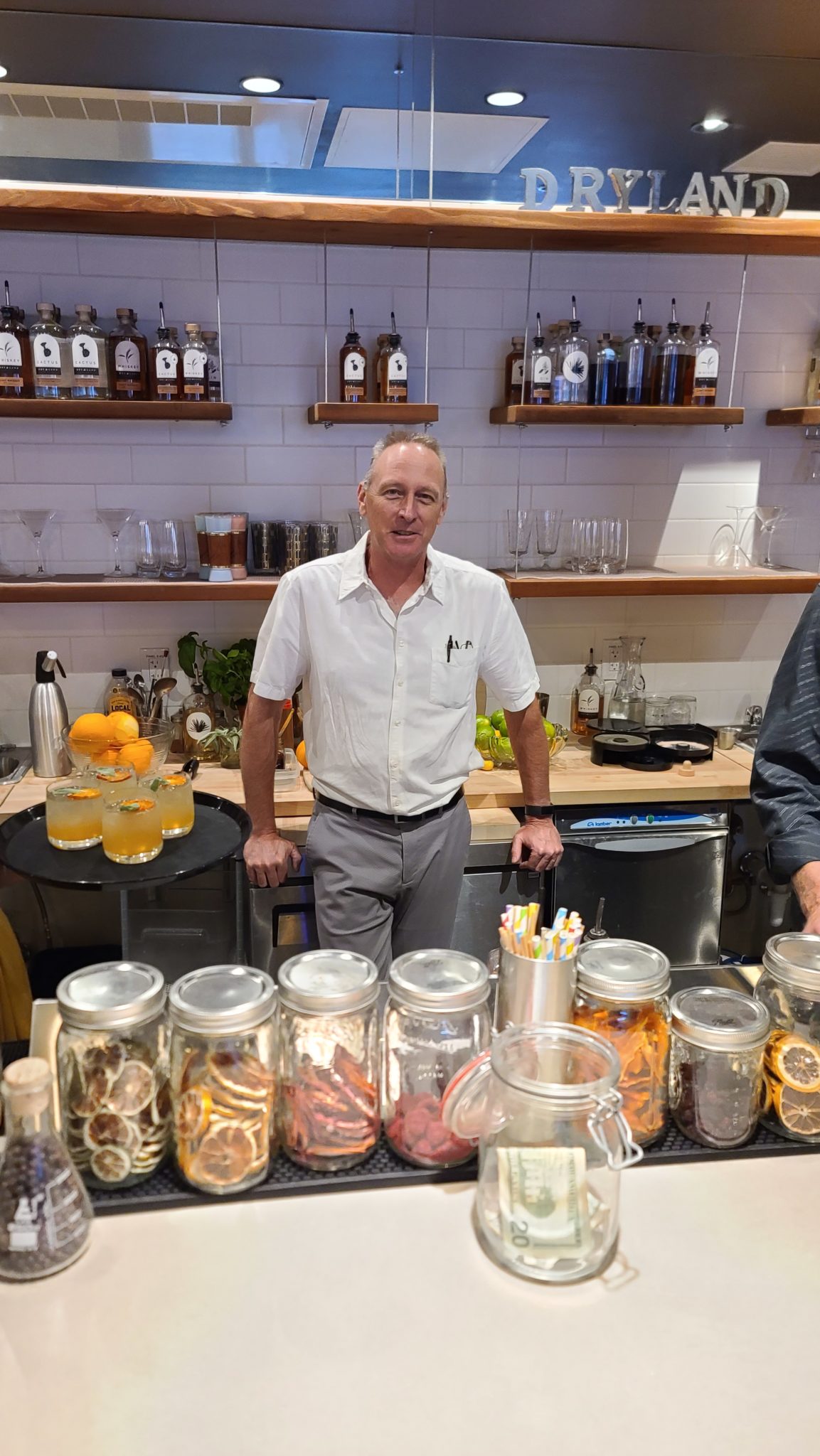 Marc Staats:
Marc Staats:
From military to distillery
Many people might think that going from a 25-year career in the U.S. Army to starting a distillery is a disruption, but Marc Staats, of Longmont, sees it as a natural progression.
Staats kind of fell into the Army. He was going to school at Mississippi State. “I was definitely not 100 percent ready for college. I had terrible grades my first semester,” he says. An Army recruiter started telling him about ROTC and how all he had to do was show up for class for an A.
While he may have joined for the grade, he stuck around for the work. “It hit on a lot of things I loved as a teenager: being outside, hunter safety, land navigation. The hook got set and they reeled me in,” he says.
He started off as a tank officer but transitioned into being a logistician. (Yeah, I didn’t know what that was either.)“We deal with all the logistics of the army. The supply chain from factory to foxhole. Everything…food, fuel, ammo, parts, supplies, you name it,” he says.
Over his 25 years, he and his wife, Sarah, were deployed all over the world, including Germany, France, Italy and Iraq. Toward the end of his career, he was working with the Pentagon for the Defense Logistics Agency, which handles $40 billion in sales annually from widgets to airplanes for all the military branches.
When Marc was deployed to Iraq, Sarah and their two kids decided to move to Longmont to be near her sister. The kids soon found friends in the children of Nels Wroe and Aaron Main, the two guys who started Dryland Distillers with Marc (drylanddistillers.com). “When this whole thing goes terribly wrong, we can blame our kids,” he says and laughs.
The three dads continued their friendship even when the Staats left for another deployment to France. Through it all, they talked about a distillery. “Every time we got together, that’s what we talked about,” Marc says. “Aaron is an amazing homebrewer for beer, and Nels is amazing in the kitchen. I love to cook but I’m a terrible brewer. Originally, we were going to open a brewery but in the Front Range everyone makes great beer. And we would run the risk of just being average.”
Nels was doing a freelance article on a distillery and got the two others on board. “He told us that this is something we could do really well,” he says. Nels brought samples when he and his family visited the Staats in France. “I immediately asked how I could be involved.”
Marc invested in the distillery when he and his family were living in Virginia but came back often to see how the business was doing after it opened in 2018. And that’s when Marc started thinking about retiring from the military.
“They say you know when it is time to retire. I knew I had a very rewarding career, and this was the right time to do something else,” he says. “This isn’t like my grandparents retiring to a motorhome to travel. That wasn’t realistic.”
He credits the military for making it possible for him to do this. “It’s an incredible gift. Most people don’t have the opportunity to do a complete mid-life career change. It’s a gift that is earned, but I know I am lucky.”
Sarah summed it a little better for him. She asked him, “So, what do you want to do when you grow up?”
Marc’s logistics skills have helped the group source products, but he is learning something all the time. “There is real science and art to turning grain into whiskey. I definitely should have paid more attention in 11th-grade science.”
But that learning is what keeps him jazzed now. “For 25 years I was comfortable. I knew what I had to do and who to talk to and I knew what doesn’t work,” he says. “And now it is very exciting to do something completely different. It might be scary for a lot of people. But now I wake up every day excited to see what I’m going to learn today.”
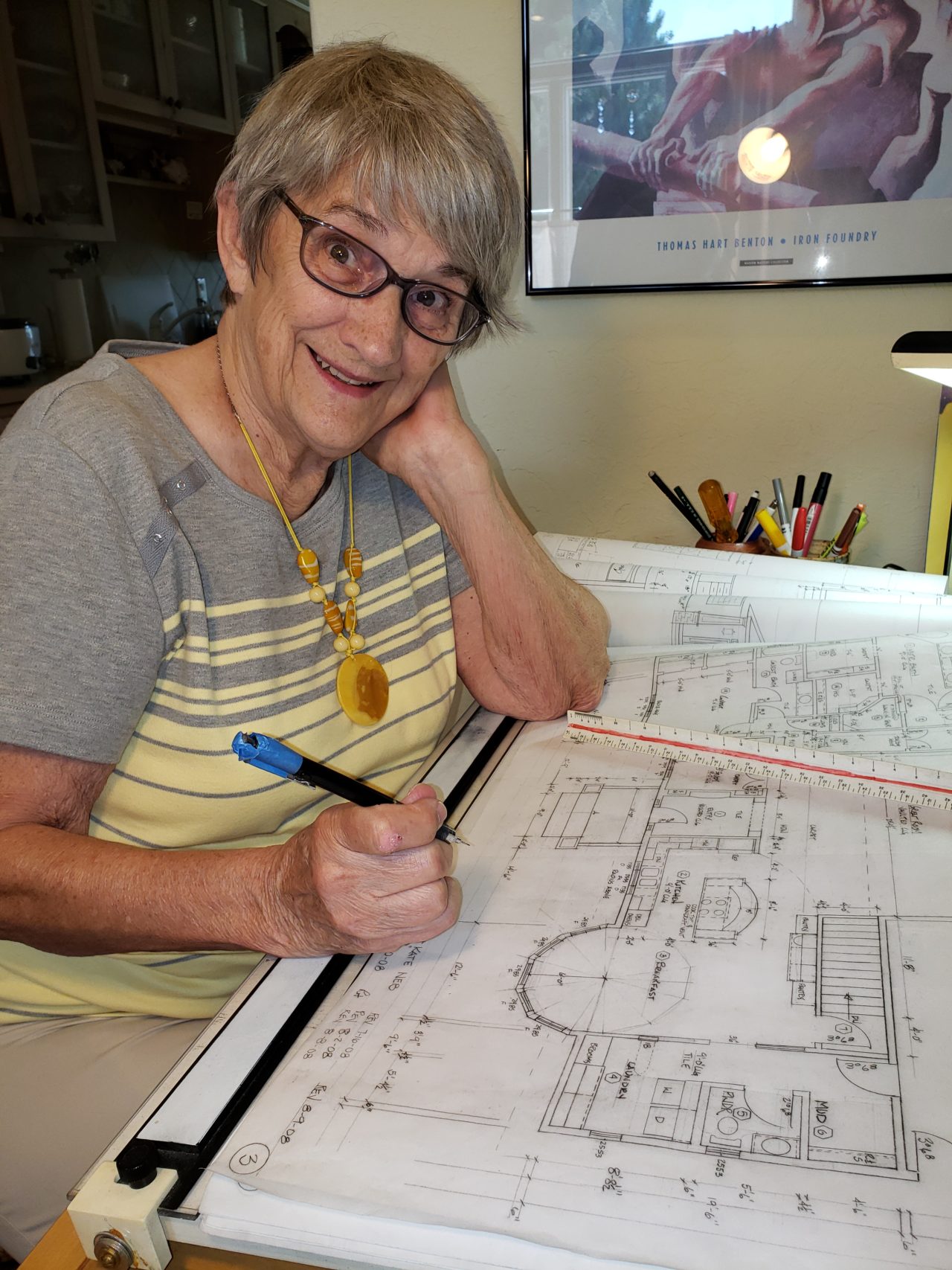
Ruth Hume:
Designing new doors after retirement
Growing up in the 1940s, Ruth Hume found an escape in books, which helped her dodge the chores of the family farm outside Fort Morgan. “Learning to read was magical for me,” she says.
ow at 86 and living in Greeley, Hume looks back at her life that started with nearly 40 years as a physical therapist before another 25 years as an interior designer. “I never was much for long-range planning,” she says and laughs.
In those early days attending theUniversity of Colorado, her plans changed several times from English to chemistry. Despite a love of science, she struggled with math and decided to look into the physical therapy program, mainly because several of her friends were in it.
One door closed and another opened. It is a theme she now sees throughout her life. In 1957 she graduated from CU with a degree in physical therapy and sent out 63 letters to various hospitals. Only one responded so she went to work in California at San Bernadino County Hospital. “Back then most of my patients were post-polio patients,” she says. “The experience could not have been better.”
Over the next six years, she married, had two daughters, divorced and then moved back to Fort Morgan to be near her family. “When I had left Fort Morgan, there were no physical therapists in town,” she says. “When I came back, Easter Seals had a part-time position at the hospital, and I got it.”
She later got a full-time gig at the hospital where she worked for 17 years before she got fed up with hospital bureaucracy and decided to open her own practice, a move that family and friends told her wasn’t going to work in the small town. “I never listened to what people told me I couldn’t do,” she says.
After a year in a rented house, she bought a building on Main Street in 1981 that everyone told her would not make it, and on the first day, there was a line of people waiting for appointments.
The business thrived on MainStreet but Hume was tiring of the grind. “Healthcare workers then, just like today, are chronically over-worked,” she says. “So, after 37 wonderful years in PT, I needed out.”
At almost 60 years old, she sold her business and immediately enrolled in interior design classes. “I never wanted to retire and sit on my porch. How boring would that be?”
Why interior design? “I have been a serial remodeler my entire life,” she says. “If I was in a hotel and I didn’t like the layout, I would move the furniture.”
Hume loved going back to the classroom. “It was like a party for me,” she says. “Because I was older, I took the criticism from the instructors, where some of the younger students felt put down. At 60, I could just say, ‘Well, that’s your opinion.’ And I had confidence in what I was doing.”
Commuting from Fort Morgan to Denver up to five times a week was difficult, but she loved the work so much, it kept her going. On her graduation mortarboard, she documented the 63,900 miles and 1,065 hours of lost sleep it took her to get this new degree.
Before graduation, she already had a job drafting designs at Caruso Kitchens in Denver. “I love the problem-solving part. Bodies and buildings have a lot of similarities. They both have structure, electrical, plumbing. It’s very transferable.”
Within a year, she already had a host of her own clients. The one difference between her and her fellow designers was the computer. She knew the programs, but she found them limiting. “The computer was a nuisance. It interfered with the flow of my ideas,” she says.
So, paper and pencil are still how she does her designs. She left Caruso when she moved to Greeley in 2000 and started her own business. She has slowed down, only taking a few jobs a year, most recently helping her grandson design the layout for his new apartment in Denver.
At 86, she can’t get around to get all the measurements she needs, but others can do that. She still sits with her paper and pencil and solves those problems. “I sometimes think about retiring,” she says. “And I still love books.”


